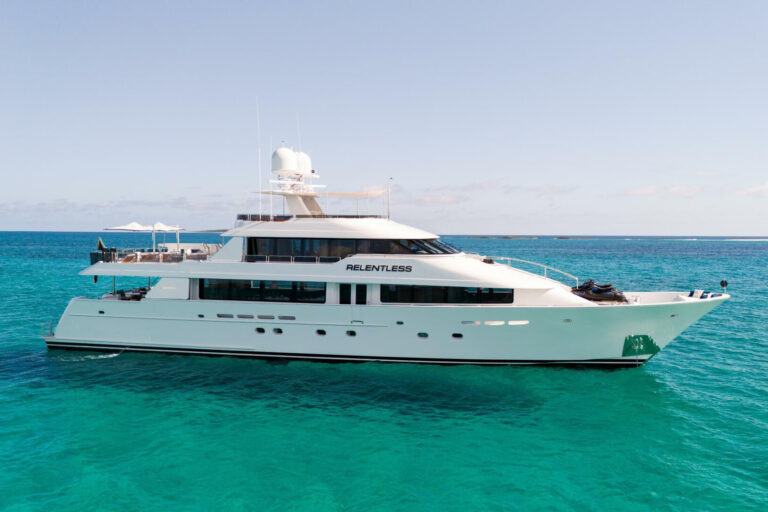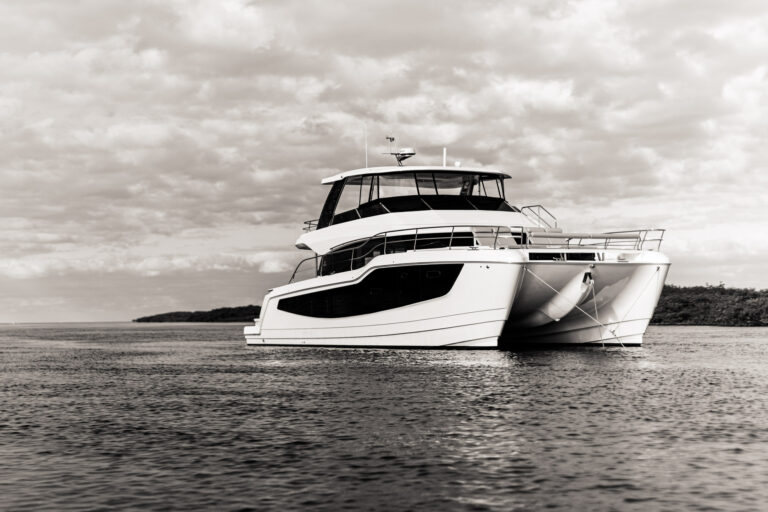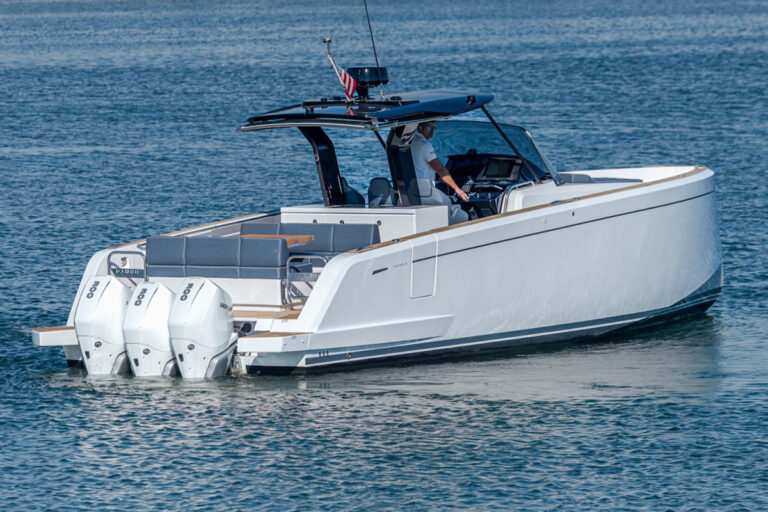Raymarine’s DSM 250 Fish Imaging Echo Sounder, based on what I saw during the few hours I tested it, is a breakthrough in recreational fishfinders. It eliminates a number of challenges associated with conventional imaging sonar by using digital signal processing, a technology that has been used in advanced radio communication systems and radar, but never for finding fish.
Many of today’s sounders use the equivalent of radar’s short time constant (STC) circuit, which reduces the receiver’s sensitivity to close-in targets, including energy reflected from surface turbulence. Anyone who has manipulated the STC control knows that if the STC is slightly too high, even large targets will disappear. Another major imaging challenge occurs when fish are close to the bottom. The large signal reflection from the sea floor can overwhelm the signal processing circuits in conventional sounders, making the fish close to the sea floor difficult or, in some cases, impossible to see. Other variables are also at play, whether the space between your hull and the sea floor is 20 or 2,000 feet. Seeing the fish can depend on their size, the water temperature or its salinity characteristics.
However, the sum of these problems is analogous to the challenge faced by a radio receiver attempting to make a very weak signal clearly audible in the presence of electrical noise and interference. Raymarine’s sonar line engineers, working in their new Ft. Lauderdale design laboratory, made this connection and looked to the evolving technology of digital signal processing as the solution.
In high-performance radio DSP receivers, the incoming signal is converted into a digital bit stream that is worked upon with a complex signal extraction algorithm stored in the radio’s digital memory. The improvement boaters hear is remarkable.
Just as remarkable is the improvement in fishfinding with Raymarine’s DSM 250. It converts sonar signal echoes from analog (varying signal strength) to a high-speed (56 Mhz) flow of 36-bit digital words. The DSM 250’s control algorithm then continuously adjusts the system’s operating and signal-processing variables. This means the DSM 250 is continually adjusting the gain (sensitivity) and bandwidth with which it processes each signal pulse returning to the transducer. In other words, it is optimizing its receiver circuits thousands of times for each sonar pulse. By contrast, a conventional sounder uses a fixed gain and bandwidth, usually optimized for mid-water signals and therefore not optimum for all other depths.
On the whole, the use of DSP in the DSM 250 makes individual fish visible where conventional sounders would show an indistinct, difficult to interpret image.
The system’s software-controlled ping rate is adaptive and can be as high as 1,580 pulses per minute-significantly higher than the maximum rate of many sounders. Pulse length is also software controlled and is variable between 100 microseconds and 4 milliseconds. Most other sounders offer four to six fixed pulse length selections. Transmit power output is also adaptive, changing in step with water depth and other influences as interpreted by the control algorithm.
All told, some 220 operating parameters are under automatic control. This means the skipper needs to use no controls other than the usual adjustments for screen display choice, A-scope operation, and brightness and contrast. During my test, the DSM 250 was perfectly happy to do its thing without me. More important, judging by what was on the screen, the performance would not likely have been improved by operator intervention.
Surface clutter from wave action and other turbulence was notably absent. Fish swimming throughout the depth of the water column were displayed in separate, distinct images on the screen. We saw none of the usual smearing or amorphous images that can result from poor receiver bandwidth.
The DSM 250’s ability to show small targets immediately above the sea floor was most impressive. The outline of a small wreck on the seabed was distinct. Morten Andreasen, Raymarine’s sonar product line manager, told me he had once been able to see rigging on a sunken vessel. Based on my experience, I believed him.
Packages include a black box sounder or a single-package unit with a 7- or 10-inch diagonal color TFT LCD screen. Either of the two integral display models, the L770D or the larger L1260D, can show sounder data as a full-, half- or split-screen presentation. A Raychart C-Map NT+ cartography option is available for both units, and they can be connected to a Raymarine radar using the hsb2 or SeaTalk communication protocol. The black-box DSM 250 can be connected to a Raymarine Pathfinder Radar via the hsb2 connection. The DSM 250 can also be used to upgrade an existing L760 or L1250 Fishfinder. The waterproof DSM 250 unit is quite small, 10.76 by 7.37 by 2.43 inches, and weighs only 2.2 pounds. Mounting should pose no problems, even in smaller boats with minimal display surface. Power consumption is modest, 10 watts from a DC source between 10.7 and 44 volts.
Price: Black box, $780.
Contact: Raymarine, (800) 539-5539; www.raymarine.com









